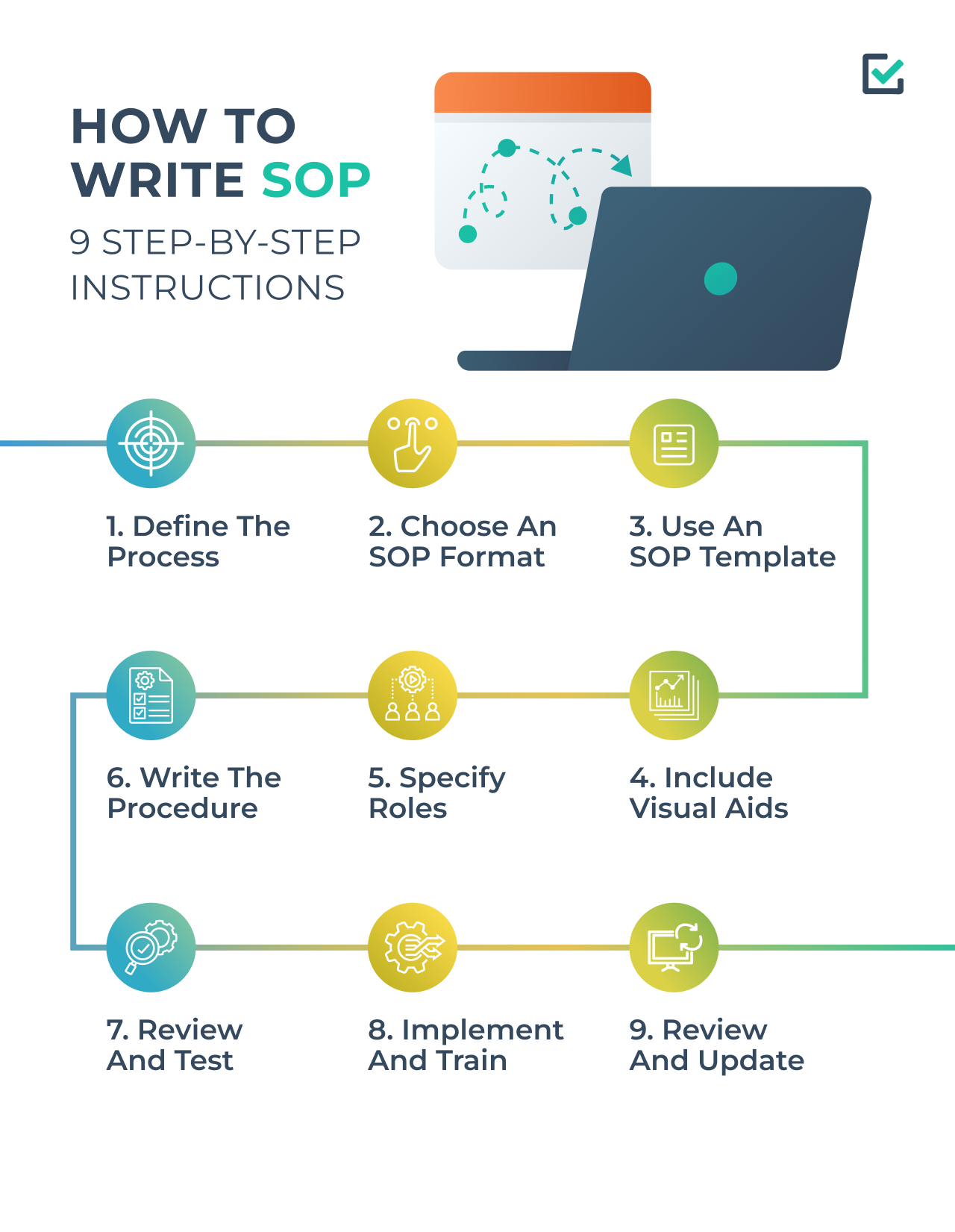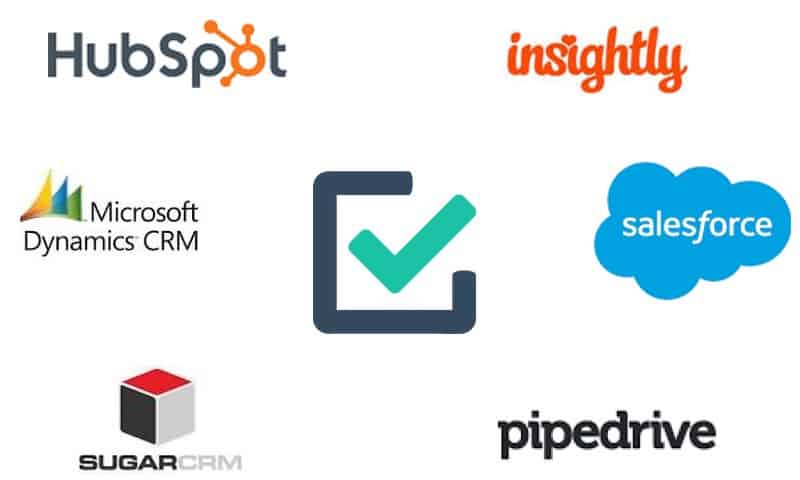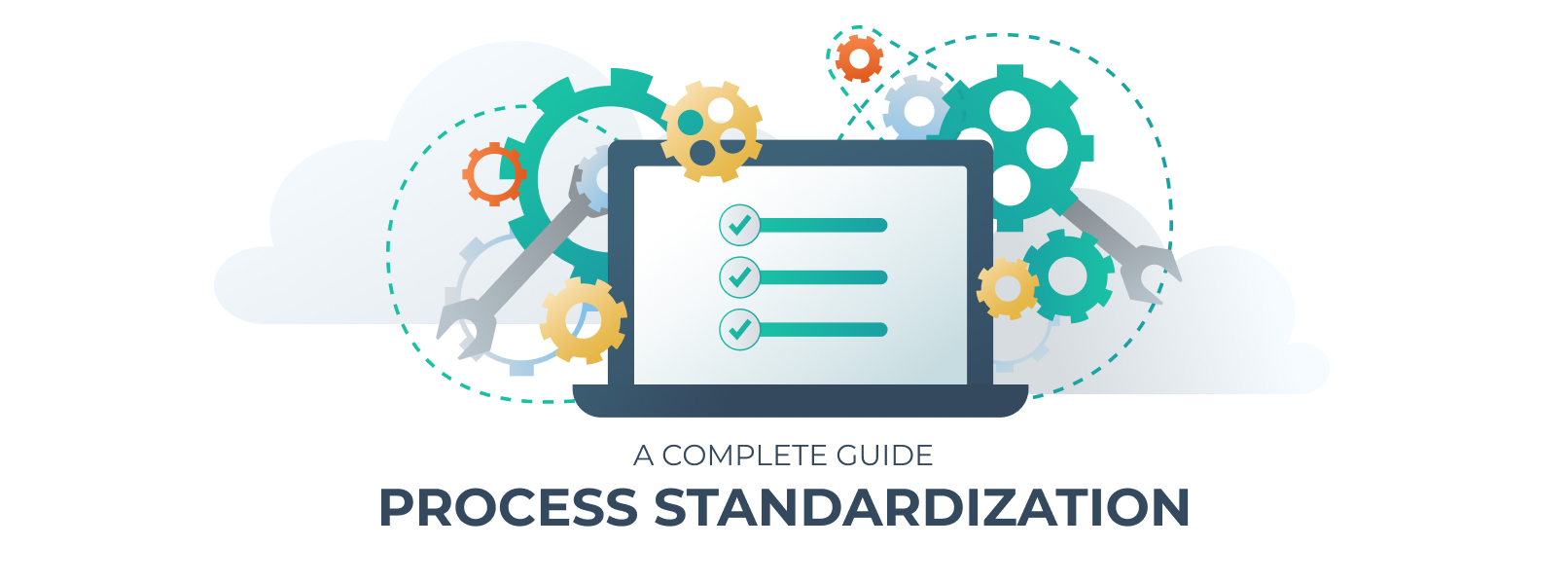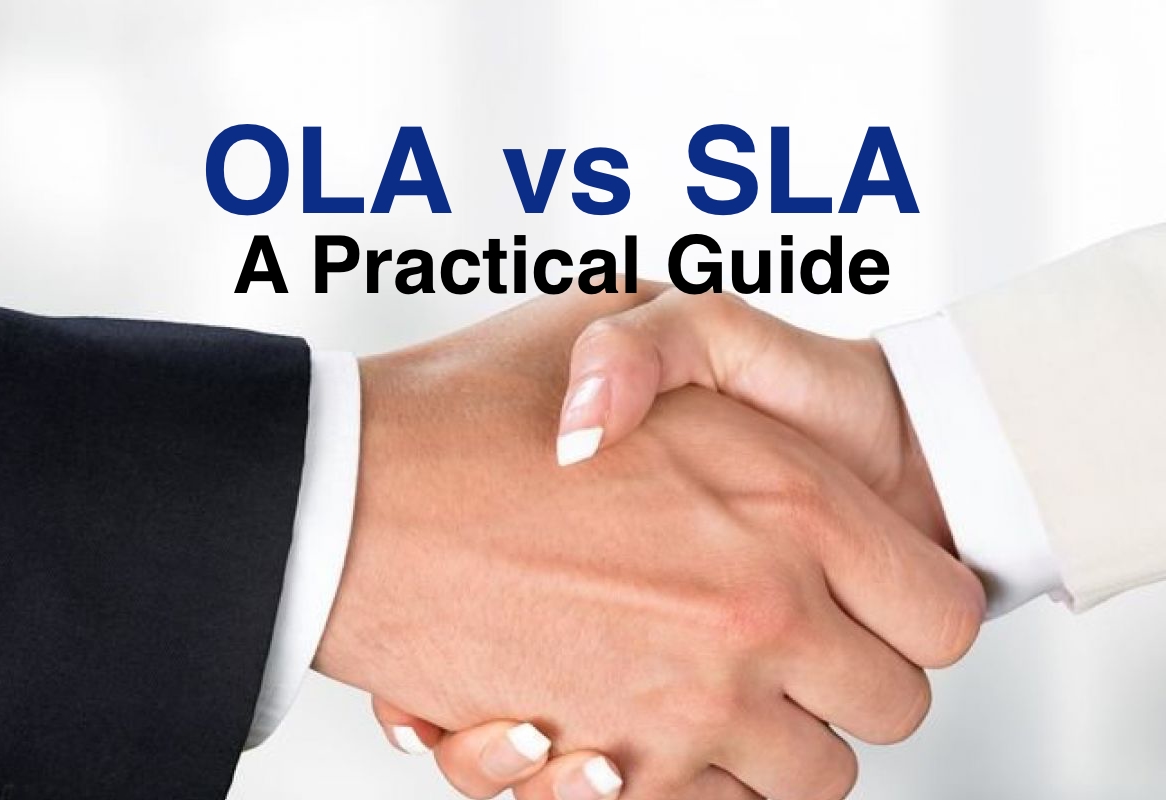- General SOP for any niche and business: https://manifestlychecklists.ai/checklists/e1c34eab-7240-4c47-9399-35197d1eef10
- SOP for Accounting: https://manifestlychecklists.ai/checklists/d495044b-8941-48b8-9140-b2b17394757a
- SOP for Advertising: https://manifestlychecklists.ai/checklists/65cad56a-4ea1-43b7-93c2-4af21d08125a
- SOP for Consulting: https://manifestlychecklists.ai/checklists/533b15ad-509a-4302-a644-d619034bd07a
- SOP for E-Commerce: https://manifestlychecklists.ai/checklists/1f09e1cd-282a-4832-89d7-14fd87c22062
- SOP for financial services: https://manifestlychecklists.ai/checklists/716ef412-b3c0-4a15-a4bd-605e754f74a5
- SOP for Hotel: https://manifestlychecklists.ai/checklists/d8ad9287-2144-43c1-bba9-9c68aa1ea279
- SOP for HR: https://manifestlychecklists.ai/checklists/320a86d1-e9b8-4999-949f-64b341fe026a
- SOP for Real Estate: https://manifestlychecklists.ai/checklists/a40db3d5-b7ec-4b8a-9325-359798976a8f
- Marketing SOP: https://manifestlychecklists.ai/checklists/533f6012-0269-4935-8254-407ad3e0c74e
A Standard Operating Procedure (SOP) is a set of instructions that helps businesses achieve efficiency, quality, and uniformity in the execution of tasks. It not only clarifies the roles and responsibilities of each team but also ensures compliance with the company’s policies and regulations. In this guide, we’ll show you the ins and outs of SOPs, including their definition, benefits, how to write an SOP and various SOP examples that can guide you. Let’s get into it.
What is a Standard Operating Procedure (SOP)?
What is an SOP?
A Standard Operating Procedure (SOP) outlines a set of procedures or steps that an organization adopts to carry out its operations efficiently and consistently. These comprehensive documents are integral to maintaining the proper flow of activities in a wide range of contexts, from manufacturing conglomerates to tech startups and nonprofits. But just what exactly is an SOP, and how does it effectively streamline business operations?
The answer lies in effectively illustrating the SOP’s role using Standard Operating Procedure examples. Let’s take a popular fast food chain like McDonald’s. Every menu item is always consistent, regardless of the location you buy it from, be it New York, London, or Tokyo. That Big Mac you enjoy so much retains its taste and presentation because of the SOPs McDonald’s follows for its preparation – from the proportions of the ingredients down to the assembly and packing.
Similarly, a global tech giant like Apple produces millions of identically superior iPhone units. How? A meticulously detailed SOP guides workers in each of Apple’s factories worldwide. The same can also be said for medical procedures or even a coffee chain that ensures your favorite coffee tastes the same every time you order. These scenarios underscore the importance of SOPs in maintaining a standard of excellence, consistency, and efficiency across operations, ultimately facilitating business growth and success.
Consider a recent shift most companies have had to make – switching to remote work. Here, SOPs are not just critical but also a lifeline for organizations to ensure business continuity. They provide a template for how employees should communicate, what platforms to use for different tasks, and even the protocol for remote troubleshooting.
In essence, an SOP is a company’s blueprint, its algorithm that gears all its functions toward optimal productivity and harmony. If your company, regardless of its size, wants to ensure every task is performed consistently and correctly to drive efficiency and effectiveness for years to come, then establishing detailed and comprehensive SOPs should be high on your list.
Keep reading to learn just how you can create and utilize effective SOPs in your organization using our detailed guide on selecting SOP formats, showcasing free SOP templates and SOP examples, and our comprehensive FAQ section. You’ll discover how to write SOPs that hit the ideal mark between detailed information delivery and concise task instruction, owing to careful formatting and meticulous standard operating procedure examples.
Dive in and discover the power of SOPs, ensuring your business operations achieve a consistency akin to that stellar cup of coffee you can’t get enough of or that iPhone that never disappoints. Give your business the sturdy bedrock of thorough, actionable SOPs and watch your efficiency and productivity reach new heights. Now, let’s get started on designing your roadmap to an SOP that assures standardized excellence, each time, every time. Onward to the ultimate roadmap for consistent business success!
Benefits of Using SOP Templates
- Efficiency: An SOP template allows the easy and efficient creation of SOP documents without starting from scratch every time. It saves time and ensures a consistent output.
- Standardization: A standard operating procedure template enforces uniformity and standardization, ensuring all processes are performed in a similar fashion.
- Improved workflow: It helps to detail the workflow, fostering a clear understanding of the roles and responsibilities, reducing the likelihood of errors.
- Smoothens transitions: In cases of staff turnover, using a SOP template can make the transition smoother as the new hires have a resource to reference.
- Compliance: It ensures adherence to regulatory standards, contributing to the business’s overall compliance.
- Productivity: By establishing repeatable procedures, a SOP template can significantly improve productivity within your team or organization.
Types of SOP Formats
There are generally four types of SOP formats that businesses use to describe their procedures. Choosing the right format plays a crucial role in determining how well your team understands and follows the procedures.
1. Checklist format:
A checklist format SOP is one of the simplest formats. Normally used for quick, simple tasks that require a lot of verification, a checklist format allows team members to ‘check off’ tasks as they complete them. For instance, before launching a website, the required tasks like checking the website’s responsiveness, confirming SEO tags, and testing site speed can be listed in a checklist SOP. This format ensures that critical tasks are not overlooked.
2. Step-by-step format
This is perhaps the most popular type of SOP, and it details tasks or operations in a sequential manner. Each step is clearly narrated, specifying what needs to be done on a step-by-step basis, like following a recipe. For instance, the process of providing customer service can be presented as steps: receiving the call, understanding the customer’s problem, finding a solution, and applying the solution.
3. Hierarchical format
For SOPs detailing complex processes or tasks that require several people of differing ranks or positions, the hierarchical format is ideal. It structures the tasks by hierarchy of importance, roles, or even departments. For instance, a company’s recruitment process might involve several departments – HR, departmental heads, and upper management – each with its own set of tasks to complete.
4. Flowchart format
This format utilizes graphics to illustrate the sequence of steps. It is particularly useful for visual learners and processes that require decision-making at different stages. It often includes decision trees that guide the user to the next appropriate step based on their response. For example, a company’s complaint-handling process can be represented as a flowchart, where different complaints lead to different pathways of resolution.
What is the right SOP type for you?
Each format has its benefits and is best suited for certain types of processes. When deciding which to use, consider the complexity of the process and the learning style of your team members. Some may benefit from a simple checklist, while others might need a visual flowchart. The key is to choose a format that effectively communicates the process and ensures your team can execute the tasks correctly and consistently.
By evaluating the kind of procedure you’re documenting, the nature of your audience, and the kind of interaction different departments have with the process, you can choose a format that serves your organization best. Remember, SOPs are not set in stone. They rarely are one-size-fits-all and may require updates and revisions to reflect changes in processes, technological advancements, and regulatory standards.
For instance, a manufacturing company may initially prefer a step-by-step SOP to describe a product assembly procedure, while a hierarchical format might better suit a large corporation outlining a multi-tiered operation. Graphic designers or those in visually driven industries could prefer flowchart SOPs, leveraging graphics, arrows, and process maps more practically. Meanwhile, the simple and concise checklist SOP might fit perfectly in a busy restaurant kitchen where chefs track their completed meal preparations.
The main aim, after all, is to ensure your SOP format guarantees clarity, thoroughness, and easy usability, regardless of which type you choose. A well-planned SOP will save resources, simplify training, reduce errors, and increase efficiency and productivity—all foundational for growth and success in any organization. Given the wide range of benefits, it’s easy to see why SOPs in the right format are vital tools in every business setup.
In the next section, we delve deeper into SOP examples to give you an even clearer understanding of how different SOPs can serve various scenarios, whether it’s a customer support protocol in a telecommunications company, a product manufacturing SOP in a factory, or a protocol for handling confidential client information in a law firm. Our focus is to make the journey to creating your SOP as practical and illustrative as possible.
Meanwhile, even as you go over the examples, keep in mind the set of unique needs, approaches, and objectives your business has. This allows your SOP to be tailored to your business specificity while aligning with the generally recognized SOP principles and structures discussed here. Remember, creating an effective SOP is not just about documenting your procedures, but it’s also about facilitating their execution in the most efficient and intuitive way possible.
SOP Examples
In a financial company, an SOP may define how employees should handle customer information. It can include steps like: start the client database software, log in with the assigned user profile, enter customer details, ensure all fields are complete and accurate, and save the information securely.
In a manufacturing firm, an SOP could dictate how an item is produced. This could involve steps such as: check the materials against the product specification, assemble the components according to the blueprint, test the assembled product to ensure it meets quality standards, package the product for delivery.
Standard Operating Procedures Examples in Office
Standard Operating Procedures (SOPs) in an office setting provide clarity on office workflows, reduce errors, and create a more organized work environment. They ensure that business operations are conducted in a uniform manner, despite changes in staff or management. Let’s explore a few real-life scenarios and how well-crafted SOPs can enhance operations:
Hiring Process:
A detailed SOP for hiring can make the recruitment process smoother and more efficient. It can set out stages such as posting job advertisements, screening and shortlisting applications, conducting interviews, checking references, and rolling out offer letters. This ensures the HR team follows consistent guidelines and maintains a high level of professionalism throughout the hiring process.
Document Management:
An SOP can be invaluable in handling the wide variety of documents in an office, such as contracts, project proposals, financial statements, and meeting minutes. The SOP could outline the creation, review, approval, distribution, storage, and disposal of such documents. This promotes clarity, consistency, and compliance in dealing with critical business documents.
Equipment Usage:
Offices rely heavily on equipment, ranging from computers and printers to coffee machines. An SOP defining correct usage, maintenance schedules, and troubleshooting steps would ensure maximum longevity and performance of these resources.
Office Communication:
Clear communication is crucial in any workplace. An SOP can establish the preferred channels for different types of communication, such as when to use emails, phone calls, or in-person meetings. It might also set guidelines for professional communication etiquette, e.g., response time to emails or meeting scheduling practices.
Information Security:
Protecting confidential and proprietary information is fundamental for any business. An SOP can define protocols for password management, data backup, software updates, protection against malware, and reporting of security incidents. It can also educate employees on identifying phishing attempts and other cyber threats.
Handling Customer Complaints:
An SOP for managing customer complaints could make a significant contribution to customer satisfaction. Such an SOP can guide steps for logging complaints, escalating where necessary, resolving the issue, and further steps for quality assurance.
Office Health and Safety:
Safety SOPs are a key aspect of every workplace. Instructions on the use of safety equipment, evacuation procedures, first-aid applications, and dealing with emergencies can go a long way towards maintaining a safe work environment.
These standard operating procedure examples for office environments give a clear indication of how SOPs bring structure to diverse business operations. By implementing and adhering to well-defined SOPs, businesses can maintain a high standard of operation and drive productivity, while ensuring compliance with governing legal, regulatory, and safety protocols. Remember, when creating your SOPs, it’s important to keep them clear, concise and easily understandable for all. Implementing an effective SOP is a decisive step towards ensuring smoother, efficient and more effective office operations.
From daily administrative tasks to more complex operational procedures, SOPs serve as blueprints for success. So, take the time to identify the processes that need an SOP, define the steps clearly, and watch as your office environment becomes more streamlined, efficient, and productive.
How to Write SOP – 9 step-by-step instructions

Creating an SOP may seem daunting, but it is made simpler by using one of the available sop templates. Here’s how to write a standard operating procedure:
Define the process:
Before diving into writing the SOP, first identify the process that needs an SOP document. Be sure you fully understand this process, its significance, and its goal. This will set the right context for your SOP.
Choose an SOP format: Depending on the nature and complexity of the process, you’ll need to decide the best format, whether it’s simple checklist, a step-by-step guide, a hierarchical SOP, or a visually oriented flowchart.
Use an SOP template: Utilize an SOP template aligned with the requirements and aesthetics of your organization. This provides consistency in your document’s design and structure, making it easier to digest and more professional in appearance.
Write the procedure: Start with the purpose and scope of the SOP, describing why the procedure is necessary and where or when it applies. Then move on to define terms or concepts that may not be universally understood.
Detail each step of the process in a clear, concise manner. It’s best to use action verbs to begin each step to set a clear directive. Try to be as specific as possible while keeping the instructions straightforward. Where applicable, include alternatives or contingencies for steps that may vary based on circumstances to ensure comprehensive coverage.
Specify Roles: Make sure roles and responsibilities for each step are outlined in a way that anyone reading the SOP should be able to know who is responsible for what. If the process involves multiple roles, consider using swimlane diagrams that help clarify each role’s specific tasks.
Include Visual Aids: Incorporate diagrams, flowcharts, screenshots, or photos as visual aids to make the SOP easier to understand. Particularly for complex steps, visual aids can enrich comprehension.
Review and Test: After drafting the SOP, review it for clarity, accuracy, and completeness. Test the SOP by having someone unfamiliar with the process follow the SOP, as this can highlight areas of confusion or missing steps.
Implement and Train: Train your team members on the procedure. Use your newly created SOP as the foundation for this training. The goal is to ensure that everyone understands the SOP and can apply it to their tasks appropriately. Encourage questions and feedback to make sure everyone is comfortable with the new process.
Review and Update: Regularly review your SOPs and make necessary updates. Processes change over time due to changes in technology, legislation, or internal business methods. As these changes occur, your SOPs should also be revised and updated to maintain their relevance and usefulness.
Writing an SOP meticulously is vital as it directly affects the productivity and efficiency of your teams. Each SOP is an investment into the fine-tuning of your business operations, and the cumulative effect of well-written SOPs can lead to significant improvements in overall business productivity, quality of output, and employee satisfaction.
Make the Most Of SOP With Manifestly
In today’s fast-paced business world, having a well-defined set of Standard Operating Procedures (SOPs) can drastically streamline your business processes and dramatically enhance your productivity rate. Streamlining repetitive tasks with SOPs not only brings consistency in operations but also enhances your team’s productivity and guides them when uncertainties arise. But here is the catch – creating effective SOPs is just part of the deal, implementing and using them effectively is where the game changes.
Enter Manifestly, a powerful tool that assists you in creating, managing, and implementing your SOPs effectively and seamlessly. Built with the user experience in mind, Manifestly incorporates all the elements to make your SOP journey smooth and intuitive. Its effortless interface and time-saving attributes quickly allow you to transform mere manuals into actionable steps with a second-to-none execution strategy.
Manifestly allows you to have a hub where you can link your SOPs to the relevant task, project, or process, ensuring seamless execution. Its feature of regularly scheduled checklists based on your SOPs provides your team with recurring process management. This way, your SOPs are not just sitting on a digital shelf, but they are embedded into your organization’s daily rhythms.
The checklist progress reporting feature provides real-time insight into your recurring operations. This level of transparency helps boost team accountability and fosters a culture of continuous improvement. Clear documentation reduces confusion and mitigates potential risks arising due to miscommunication or misunderstanding. SOPs are no longer isolated documents but integrated, living tools driving your business performance.
Manifestly also allows you to delegate tasks, attach documents, and insert comments. These quality-enhancing features allow your employees to view SOPs not as stringent regulations, but as a clear roadmap for success, creating a more engaged and empowered workforce that contributes to your business’ growth and success.
Other features of Manifestly, such as integrating SOPs with your existing workflow software like Slack or MS Teams etc. reduces interruptions, thereby enhancing seamless execution. You can also customize your SOPs for your organization’s needs, helping you maintain brand consistency across all your procedures.
Take a leap towards operational efficiency, and make the process of writing, maintaining, and implementing SOPs a breeze with Manifestly. Experience transparency, consistency, and a significant climb in productivity as your team harnesses the power of SOPs made easy by Manifestly. It’s time to elevate the way you manage and perform routine tasks.
Is your business ready to leverage the power of SOPs with Manifestly? Sign up now for a free trial and start your journey towards seamless, simplified operational management. From the creation of an SOP to its execution, Manifestly fosters a smoother workflow, ensures consistent processes, and promotes a culture of efficiency within your organization.
Don’t miss this opportunity to turn your standard operating procedures into a dynamic, integrated part of your operations. Embrace the simplicity, transparency, and efficiency that Manifestly brings to your SOP journey. Unleash your business’s true potential, and let Manifestly take your standard operating procedures to the next level of operational excellence. Start now to experience the Manifestly difference.
Standard Operating Procedure Frequently Asked Questions
How do I create a SOP document?
You begin by defining the process that needs to be standardized, select an SOP format that best represents the process, use an appropriate SOP template, describe the process in detail, and then review, test, implement, and update the document as needed.
How to make an SOP
The basic steps to create an SOP include: identifying the process you want to standardize, selecting an appropriate SOP format, using an SOP template, writing clear and concise instructions, reviewing SOP for accuracy, testing, implementing, and regularly updating it to reflect any changes.
How to write standard operating procedures?
Begin by thoroughly understanding the process that needs standardization. Next, use an SOP format that suits your organization’s needs and use an SOP template as a guide. Document each step of the process, making sure to include who is responsible for each action and necessary resources. Test the SOP with someone unfamiliar with the process and adjust as necessary. Train your staff on the new SOP, and review and update it regularly.
What is SOP format?
An SOP format is the structure or layout you use to write your standard operating procedure. Formats can be step-by-step, hierarchical, or visual in nature, depending on what best suits your business’s needs.
How to create an SOP template?
Creating an SOP template involves developing a consistent format for documenting your standard operating procedures. This can include sections for the purpose, resources needed, steps, responsibilities, and notes. It should be a reusable format that can be applied to any process in your organization.
What does an SOP look like?
An SOP is a document outlining a specific procedure in a systematic, detailed way. It typically consists of a purpose or objective, scope, procedures/steps, roles and responsibilities, and any necessary definitions. In some cases, SOPs can include diagrams or flowcharts.
How to write an SOP template?
First, identify the key elements needed in the SOP like the title, scope, purpose, procedure, and definitions. Next, structure these elements in a logical order. This structure forms your SOP template. The procedure section is usually detailed and broken down into steps, sub-steps, or flowcharts according to the SOP format.
What is an SOP document?
An SOP (Standard Operating Procedure) document is a detailed, step-by-step guide outlining how to perform a particular process or task. It sets the standard for how operations in a business should be carried out.
What is an SOP example?
An SOP example lays out the specific steps to accomplish a task. For instance, an SOP for processing refunds might include steps such as: verification of the purchase, confirmation of the reason for refund, approval from the manager, processing the refund, and documentation.
How to format an SOP?
The format of an SOP largely depends on the nature of your business operations and the preferences of your organization. However, a typical SOP should include a title, purpose, list of necessary materials or tools, and a detailed, step-by-step method or procedure. Be sure to use bullet points or numbering for ease of digestion.
What is an SOP format?
An SOP format is the structure of your standard operating procedure document. It is usually divided into sections such as title, purpose, scope, roles and responsibilities, procedure, references, definitions, and appendices.
“What are the three types of SOPs?”
The three major types of SOPs are step-by-step format, hierarchical format, and flowchart format. The step-by-step format provides a simple listing of tasks, while the hierarchical format suits complex tasks with varied levels of authority. The flowchart format graphically represents the steps in a process, making it easier to visualize the workflow.
By creating an SOP, companies can standardize tasks to improve overall efficiency, consistency, and quality of work. Utilize our offered SOP templates to create your unique standard operating procedure. With our guidelines on how to write and format SOPs, you’ll have a tool in place that significantly improves operations within your organization.








